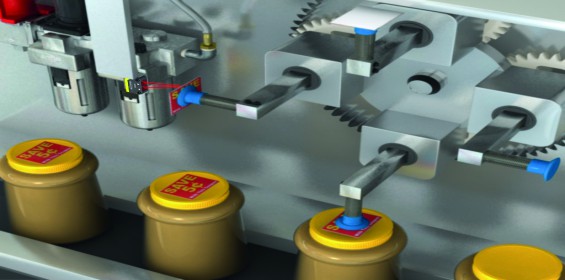The Internet of Things / Industry 4.0 has sparked a huge amount of interest in industrial sensors, which can be seen in online search statistics. So why has it not created a whole tidal wave of new sensor families designed for complex data extraction? Is it simply a case of teaching an old dog, new tricks? While the answer is relatively simple the explanation may be complex.
Sensors are the front line in the information gathering process required in order for all the complex data processing to produce a useful result. In simple terms the machine owner doesn’t care how the information was gathered, or how it was processed. They just want to know that component X on machine Y will need replacing in 6 weeks, or that greater efficiency can be achieved by changing from A to B at 3pm on Wednesday. This isn’t very different to what the machine owner has been demanding of sensors over the past 30 years. They don’t want to know how it does it, they just want the sensor to tell the machine what to do and when it needs to do it.
When sensors (photoelectric, inductive, pressure, temperature….) were in their infancy, they were difficult to configure and the users were relatively inexperienced. Over the following decades sensor manufacturers have had to meet the demands of industry and make sensors far more complex, in order to differentiate far smaller differences, but also to make them much easier to set up and use. In order to achieve this the sensor gathers a large amount of data and is packed with intelligence to process this data and output a simple on/off signal.
Now that IIoT/ Industry 4.0 is demanding data to be able to function, all we need to do is output the information that the sensor has been using internally for decades. One company that says it had the foresight to future-proof its designs, is Banner. The communication function used in production to facilitate bespoke sensors, something that Banner is renowned for, can now be used to extract data. Many sensors already had industry standard Bus/Network capabilities and for other sensor ranges, a simple modification of communication protocol was all that was required.
In complete contrast to the way products are normally developed, i.e. start with the basics and then add features, much of the capability of these data packed sensors has lain dormant, waiting for demand to catch up.
Often the required data simply wasn’t being collected while the sensor output was directly controlling the process. Connect the sensor to a PLC input and its output can be recorded and time-stamped. This data can then be interpreted to provide meaningful information. So it’s not a case of teaching an old dog new tricks, they already knew the tricks but no one was watching. And just as those early devices were dubbed ‘magic eyes’, then perhaps sensors such as Turck Banner’s Q5X, with its on-board intelligence and ability to detect practically every target, should be called the ‘all-seeing-eye’.
The Q5X is a laser triangulation sensor that offers very high accuracy across its range of 9.5cm to 2m. With true problem-solving capability the Q5X provides reliable detection of even the most challenging targets, including detection of black targets against a black background, black targets against a shiny metal background, clear and reflective objects, multi-colour packaging, and targets of all colours.
Set-up and troubleshooting are greatly simplified by the bright output indicator and real-time distance feedback display. The dual teach mode measures both distance and light intensity to solve the most difficult applications. The Q5X is programmable via an on-board user interface, remote teach, IO-LInk or optional remote sensor display. The sensor is rated IP67 for reliable performance in wet environments and features a 270-degree rotatable M12 connector for maximum mounting flexibility.
Another front runner in the Turck Banner range of photoelectric sensors is the Q20. The Q20 is a hugely versatile sensor with a universal rectangular housing and multiple mounting options, making it ideal for global manufacturing.
The Q20 range includes all popular modes; opposed, polarised and non-polarised retro-reflective, and diffuse models. The small spot diffuse models are ideal for small feature detection in error-proofing and inspection applications. These sensors feature bright LED status indicators visible from 360°, and a visible red beam, for easy alignment, is included on most models.
With its IP67 and NEMA 6 rated housing, able to withstand 1200 psi, the Q20 provides water-tight protection for rugged, reliable sensing even in the harshest wash-down environments.
A variety of mounting accessories is available for both the Q5X and the Q20 range, including a robust metal shroud for tough, arduous applications. This negates the need for costly metal bodied sensors.
For further information please visit: www.turckbanner.co.uk

